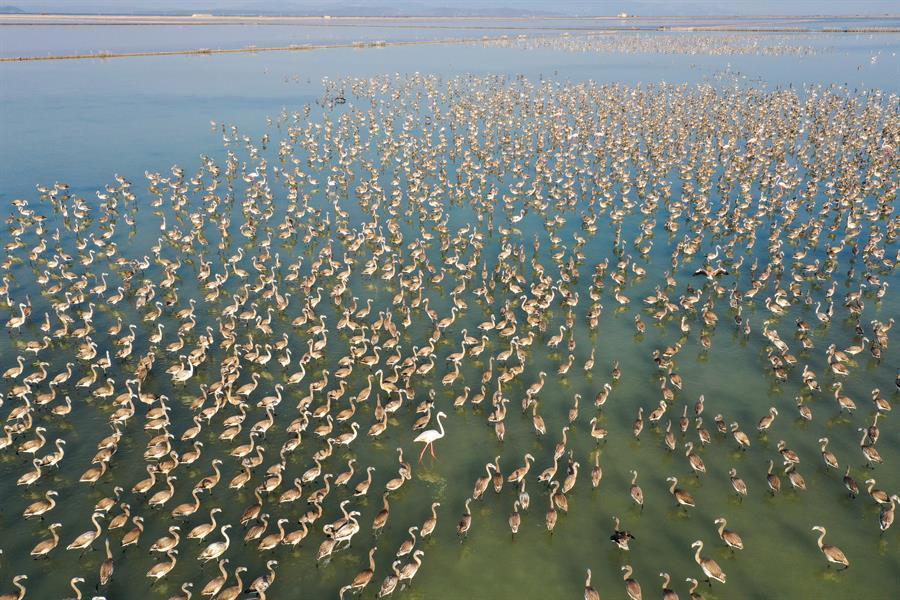
Approximately 18,000 flamingos that hatched two months ago in the İzmir Bird Sanctuary, one of the world’s leading artificial breeding islands, began to flap their wings in the “nursery” to fly.
The original natural nesting island in the İzmir Bird Sanctuary (Gediz Delta), which was one of the two breeding grounds of flamingos, which have an important place in Anatolian culture, has disappeared over time due to wave erosion.
Therefore, the world’s largest artificial hatchery island was created in 2012 on an area of approximately 6,500 square meters and the number of flamingos increased gradually.
The artificial island was cleaned of hard objects and prepared for the hatching season so that flamingo couples would not have difficulty in nesting. The island, which is reorganized every year by the 4th Regional Directorate of Nature Conservation and National Parks, has hosted thousands of flamingos since May.
Six flamingos, born two months ago by breaking their eggs on the island, where no people are allowed from outside, acquire their first flying skills in the İzmir Bird Paradise.
As a result of remote observations, it is estimated that between 16,000 and 18,000 babies were born in the bird paradise, where the exact number of flamingos will be determined by the nest count to be made after the birds move to other areas and leave the island.
The flamingo chicks, followed closely by the teams of the İzmir branch of the 4th Regional Directorate of Nature Conservation and National Parks, met with water about one month after they hatched.
After hatching, the flamingo chicks with black and smoked feathers are fed with artemia salina, a type of arthropod also known as salt shrimp.
The little flamingos usually spend their time in the water next to the island called the “nursery.” The young one, which start to feed on their own and wander in the water around the island, are making flying practices in the water by opening wings, imitating the adults in the colony.
Special measures are taken in the İzmir Bird Sanctuary so that the baby flamingos are not disturbed during the hatching process. The ones who spend two months with their families learn to fly and live alone in nature starting from the third month.
Migration to Gediz Delta, other wetlands
Speaking to the state-run Anadolu, İzmir Bird Sanctuary field engineer Celal Murat Aslanapa said that the flamingo island in the Gediz Delta, one of Turkey’s 14 Ramsar sites and protected areas by the General Directorate of Nature Conservation and National Parks, is the largest in the world with an area of approximately 6,500 square meters.
Aslanapa stated that the flamingos with the highest population in the Gediz Delta came to the island, whose construction was completed in 2012, for breeding purposes.
“This year, like every year, the entire surface of the flamingo island was used by flamingos for hatching. Again this year, we think that approximately 16,000 to 18,000 chicks hatched on the island. Flamingo chicks have recently started to try to fly, they will learn to fly and go to the Gediz Delta and other wetlands at the end of this month. Every year, before the breeding season, the island is rehabilitated by the directorate, and the soil is hoed to be softened and to become suitable for flamingos to nest. In addition, the island is surrounded by a wooden fence, protecting the eggs from wild animals,” he said.
Stating that a camera system was installed in the area where the island is located, and that the surrounding area is monitored from the İzmir Bird Paradise Visitor Center on a 24/7 basis, Aslanapa added that the live images taken from the camera can be viewed by the visitors to the region.